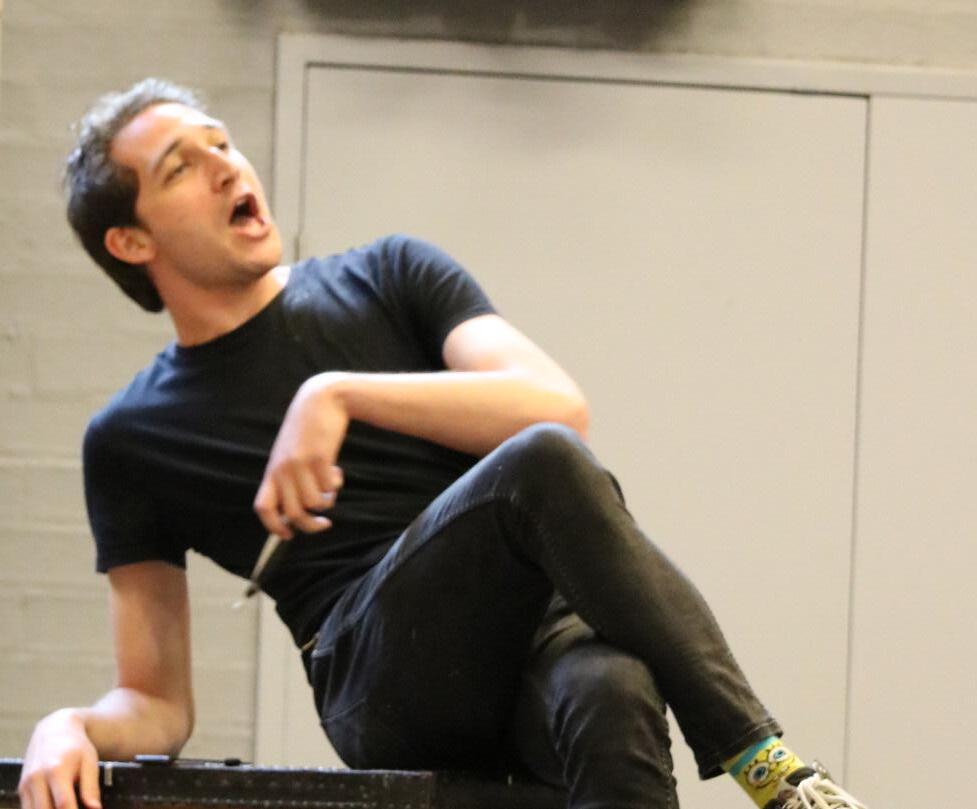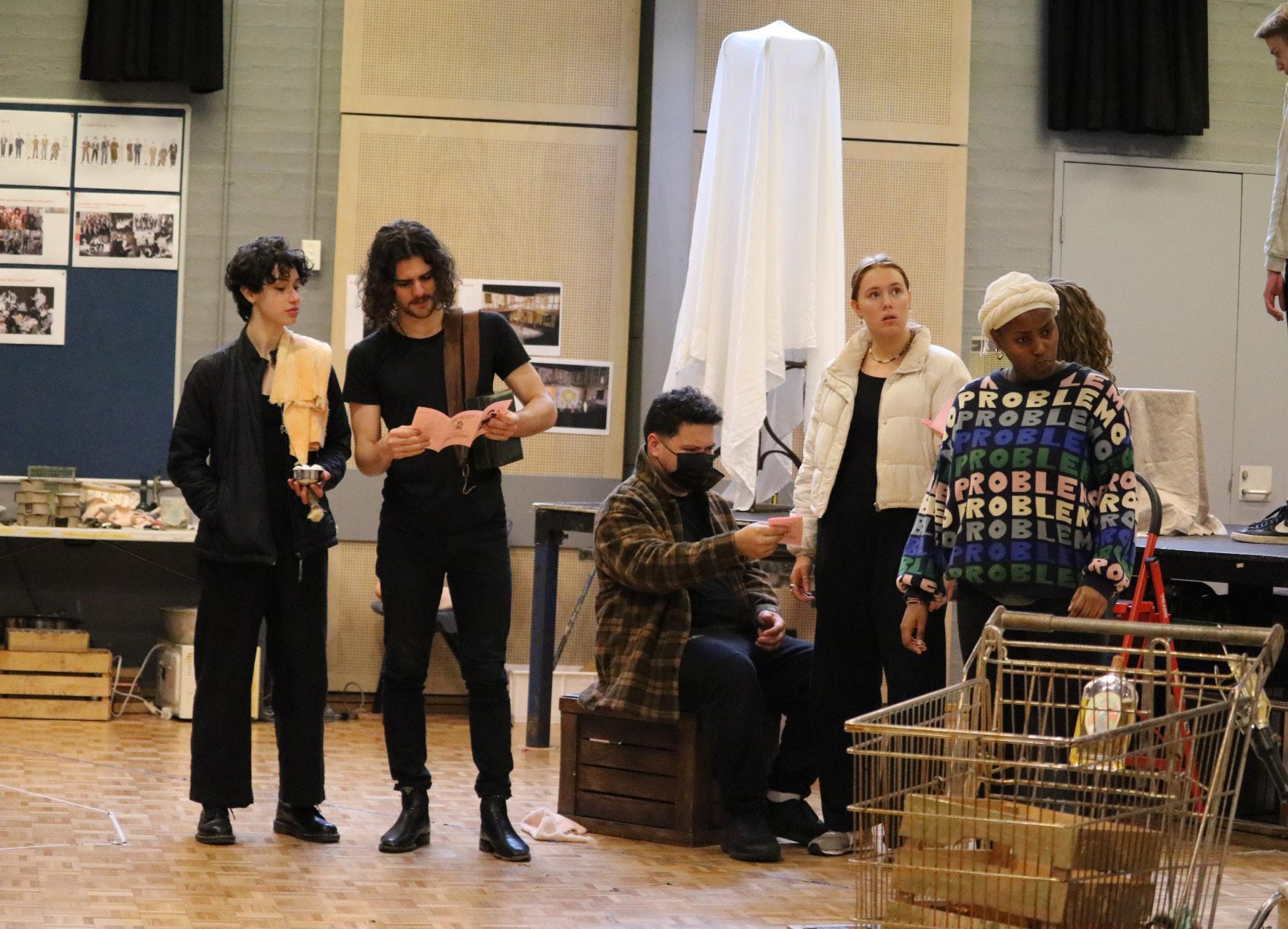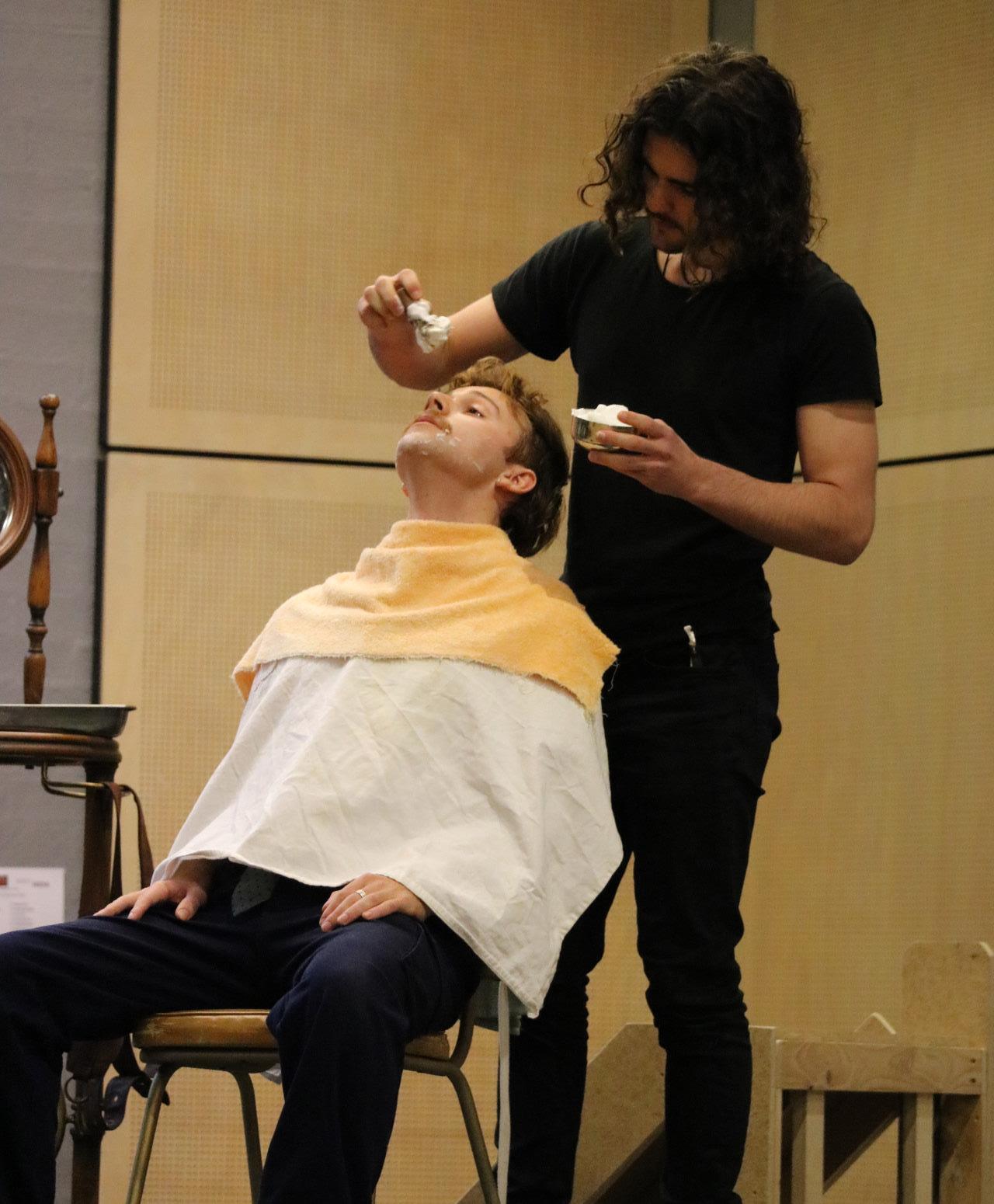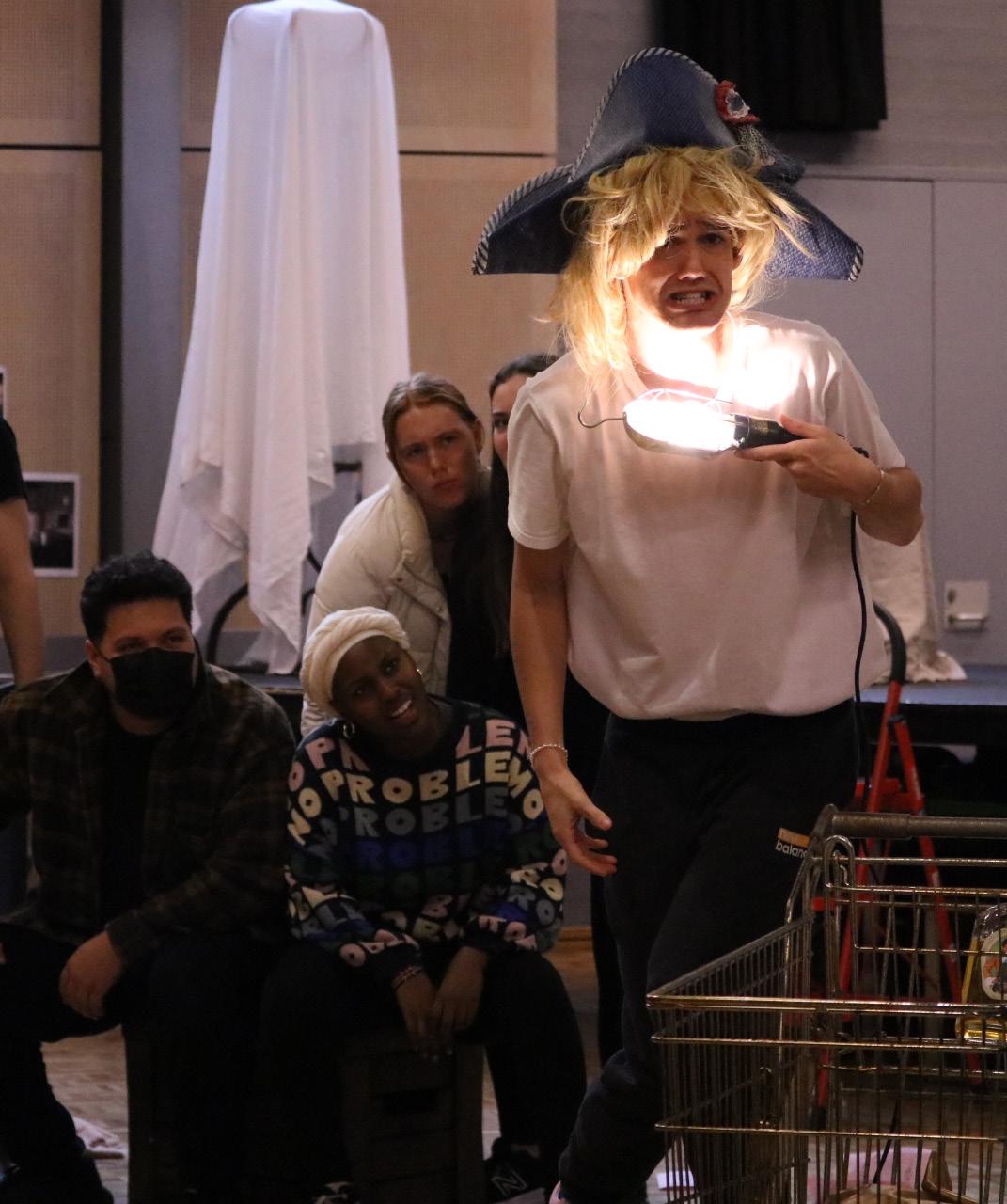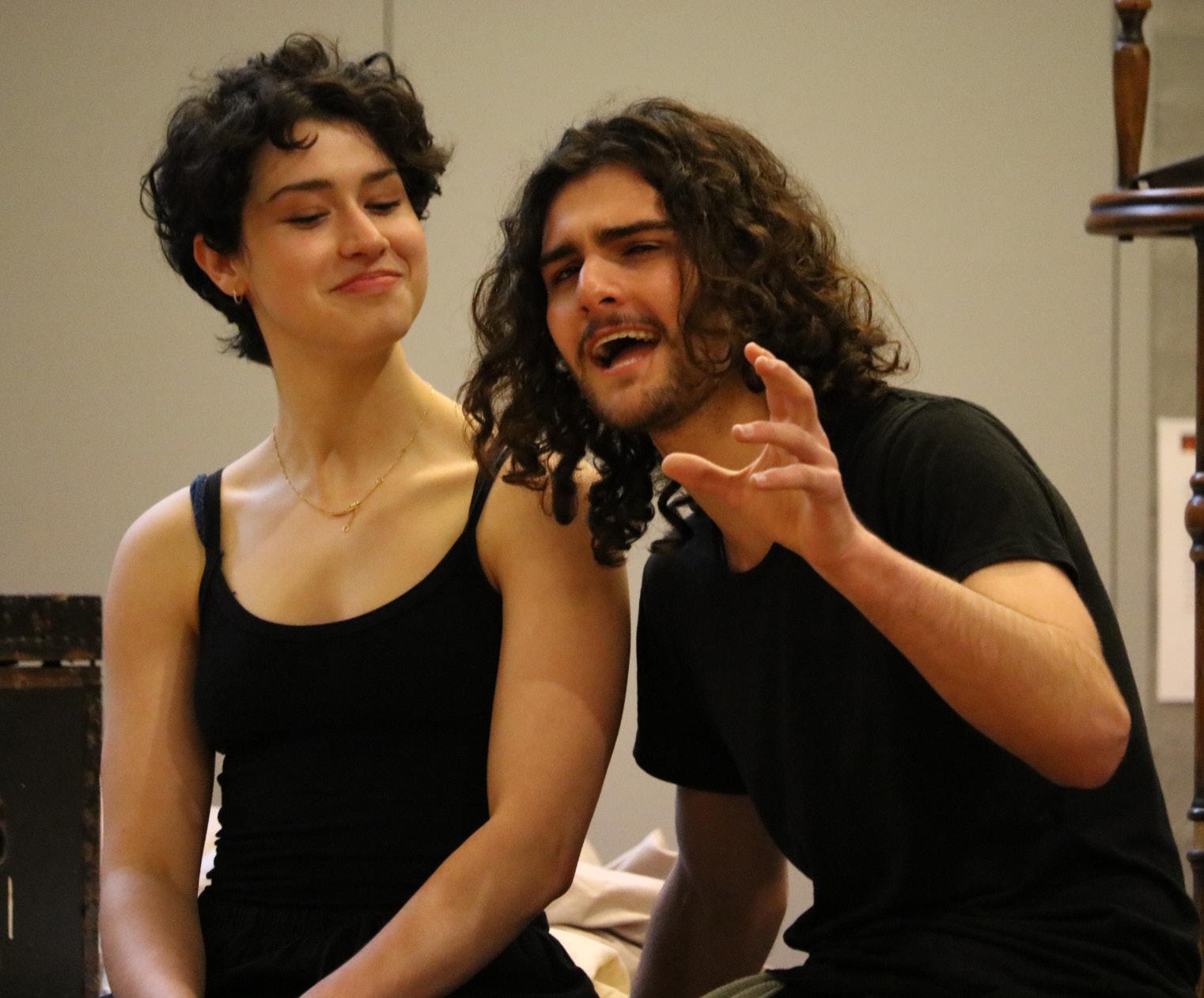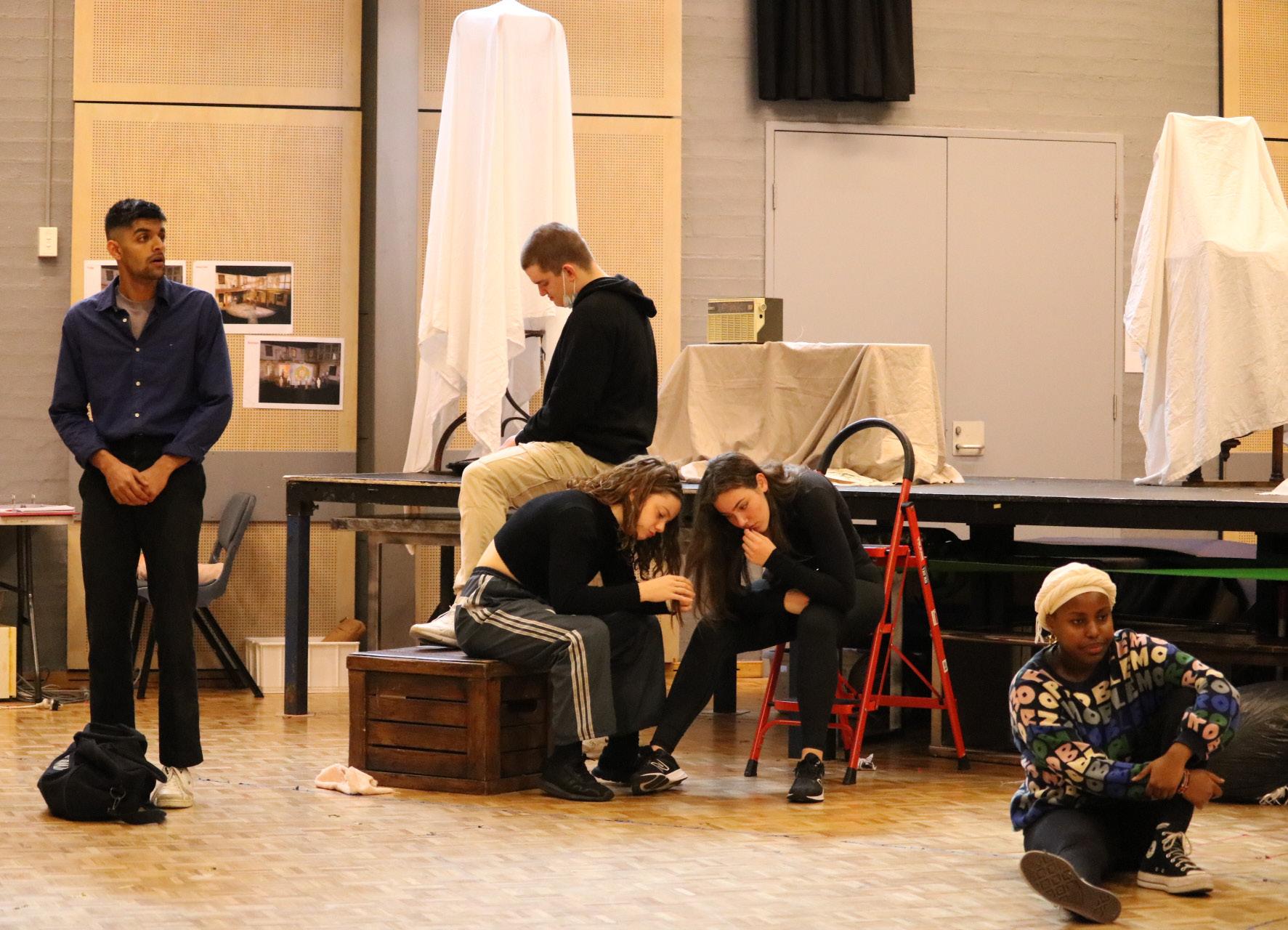
2 minute read
DIRECTOR’S NOTE MUSICAL DIRECTOR’S NOTE
by NIDA
Constantine Costi — Director’s Note
Sondheim gives very few conceptual directives to those embarking on a production of Sweeney Todd. In interviews, almost like a mantra, he repeatedly insists that a good Sweeney Todd needs to aspire no further than to terrify and make the audience laughand he’s not wrong. The story of Todd, rooted in the penny dreadfuls of 19th century England, has both amused and frightened audiences for hundreds of years. However, Sondheim’s rendition of the tale is too intricate and too psychologically complex to be merely experienced as a Victorian parlour game. Perhaps Sondheim didn’t want us to delve too deeply – don’t ask how the pies are made ... But Sondheim, famously a fan of cryptic games and puzzles, has left us clues to unravel.
Advertisement
Complicated artists are recurrent in his work. There is a direct connection between characters like George Seurat, Franklin Shepard, or even his John Wilkes Booth (“some say you killed your country because of bad reviews”). By many accounts, Sondheim himself, ambitious, methodical, and unrelenting in his exploration of the details of his work, may share more similarities with Mr. Todd than he would like us to see. It’s not surprising that one of the first things we learn about Todd is that he is “a proper artist with a knife,” and, like a composer, “Sweeney heard music that nobody heard.”
And let’s not forget the emotional core of this piece— it is fundamentally a series of loves gone wrong. Mrs. Lovett embodies the depths one can descend to in the throes of unrequited love. Judge Turpin deludedly sees himself as the noble protector of his ward, Johanna, claiming, “I loved you like a daughter.”
Of course, there’s an unseemly gossipy danger of scrounging around an artist’s love life – but it’s not hard to gather that Sondheim’s romantic history was unconventional. He lived in something resembling romantic seclusion, coming out of the closet in his
40s, and he didn’t live with a partner until he was 61. In Todd, the composer exhibits a deep cynicism towards romance. Even characters like Anthony and Joanna, often portrayed as innocents amidst a world of corruption and vice (a theatrical experience akin to drinking a glass of watered-down milk), require closer examination. What kind of life did a sailor like Anthony lead? He is hardly the product of a finishing school. What is the psychological state of the kept delicate bird, Joanna, under the perverse care of a magistrate? Even in their dialogue, it is Anthony’s wild and reckless obsession with Joanna that culminates in his vow to “steal” her. Is any escape worth it for Joanna? She doesn’t even know his name after multiple encounters. It’s hard to believe that Sondheim intended to portray naïve innamorati.
The music, the perpetual scene partner, accompanies, challenges, and betrays our downtrodden Londoners. It is as moving and intricate as any opera by Stravinsky or Britten and should be regarded as such. So, I am thrilled that NIDA have taken this on, and that the students involved have thrown themselves into it with the flair and daring required to bring a work of this scope to life.
Andrew Worboys — Musical Director’s Note
Our version of Sweeney Todd is set in the 1980s so we had to adjust the musical arrangements to reflect this.
We have added drums, electric guitar/accoustic guitar and mandolin and an electric bass. We have also added a 2nd keyboard part with orchestral sounds and a dx7 for the quintessential 80s sound.
These students have worked extremely hard on this very difficult score. We hope you enjoy this very unique version of Sondheim’s classic musical.


